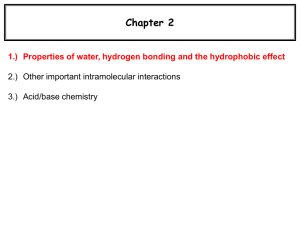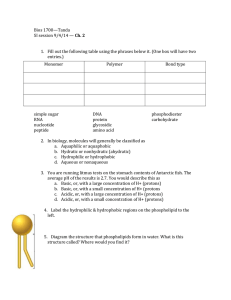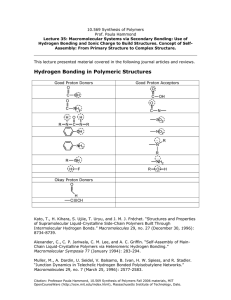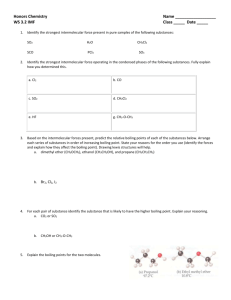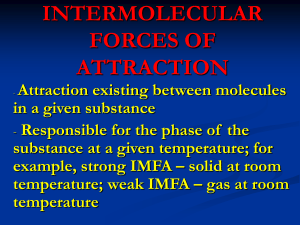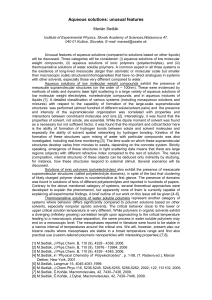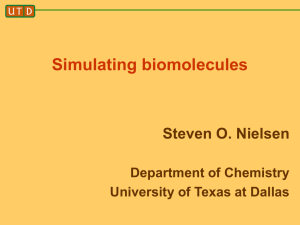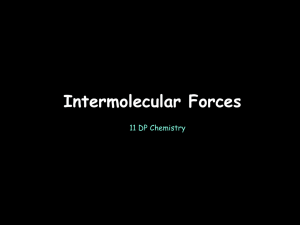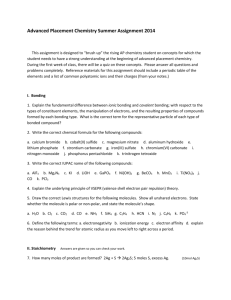135-84-1-SP
advertisement
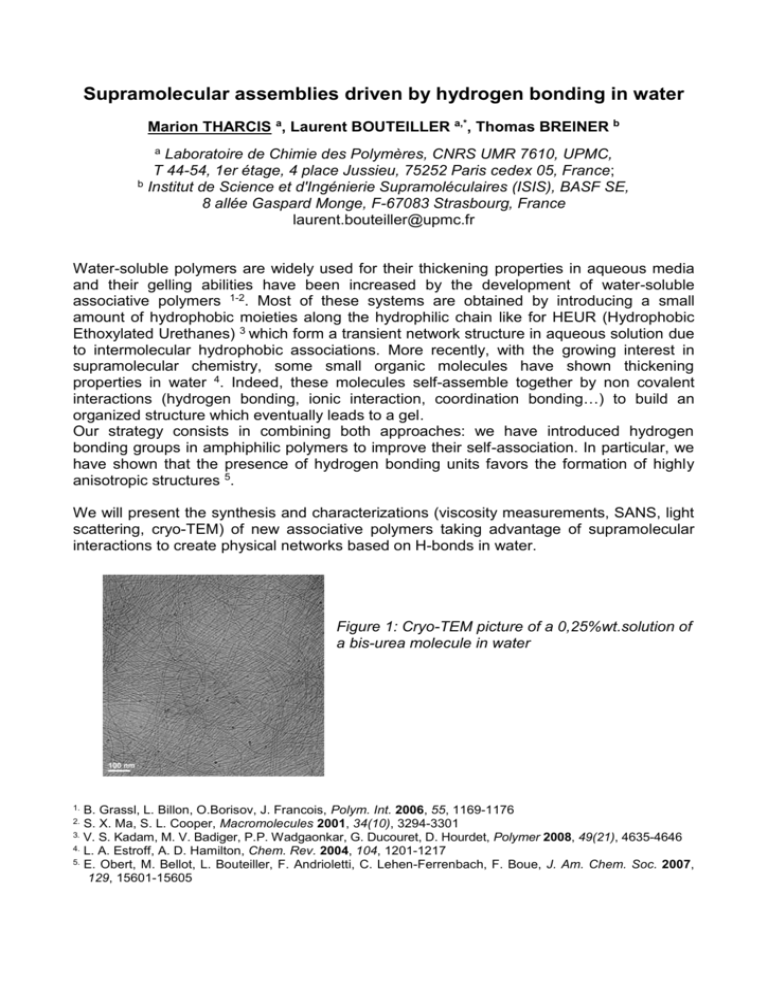
Supramolecular assemblies driven by hydrogen bonding in water Marion THARCIS a, Laurent BOUTEILLER a,*, Thomas BREINER b a Laboratoire de Chimie des Polymères, CNRS UMR 7610, UPMC, T 44-54, 1er étage, 4 place Jussieu, 75252 Paris cedex 05, France; b Institut de Science et d'Ingénierie Supramoléculaires (ISIS), BASF SE, 8 allée Gaspard Monge, F-67083 Strasbourg, France laurent.bouteiller@upmc.fr Water-soluble polymers are widely used for their thickening properties in aqueous media and their gelling abilities have been increased by the development of water-soluble associative polymers 1-2. Most of these systems are obtained by introducing a small amount of hydrophobic moieties along the hydrophilic chain like for HEUR (Hydrophobic Ethoxylated Urethanes) 3 which form a transient network structure in aqueous solution due to intermolecular hydrophobic associations. More recently, with the growing interest in supramolecular chemistry, some small organic molecules have shown thickening properties in water 4. Indeed, these molecules self-assemble together by non covalent interactions (hydrogen bonding, ionic interaction, coordination bonding…) to build an organized structure which eventually leads to a gel. Our strategy consists in combining both approaches: we have introduced hydrogen bonding groups in amphiphilic polymers to improve their self-association. In particular, we have shown that the presence of hydrogen bonding units favors the formation of highly anisotropic structures 5. We will present the synthesis and characterizations (viscosity measurements, SANS, light scattering, cryo-TEM) of new associative polymers taking advantage of supramolecular interactions to create physical networks based on H-bonds in water. Figure 1: Cryo-TEM picture of a 0,25%wt.solution of a bis-urea molecule in water 1. B. Grassl, L. Billon, O.Borisov, J. Francois, Polym. Int. 2006, 55, 1169-1176 S. X. Ma, S. L. Cooper, Macromolecules 2001, 34(10), 3294-3301 3. V. S. Kadam, M. V. Badiger, P.P. Wadgaonkar, G. Ducouret, D. Hourdet, Polymer 2008, 49(21), 4635-4646 4. L. A. Estroff, A. D. Hamilton, Chem. Rev. 2004, 104, 1201-1217 5. E. Obert, M. Bellot, L. Bouteiller, F. Andrioletti, C. Lehen-Ferrenbach, F. Boue, J. Am. Chem. Soc. 2007, 129, 15601-15605 2.

